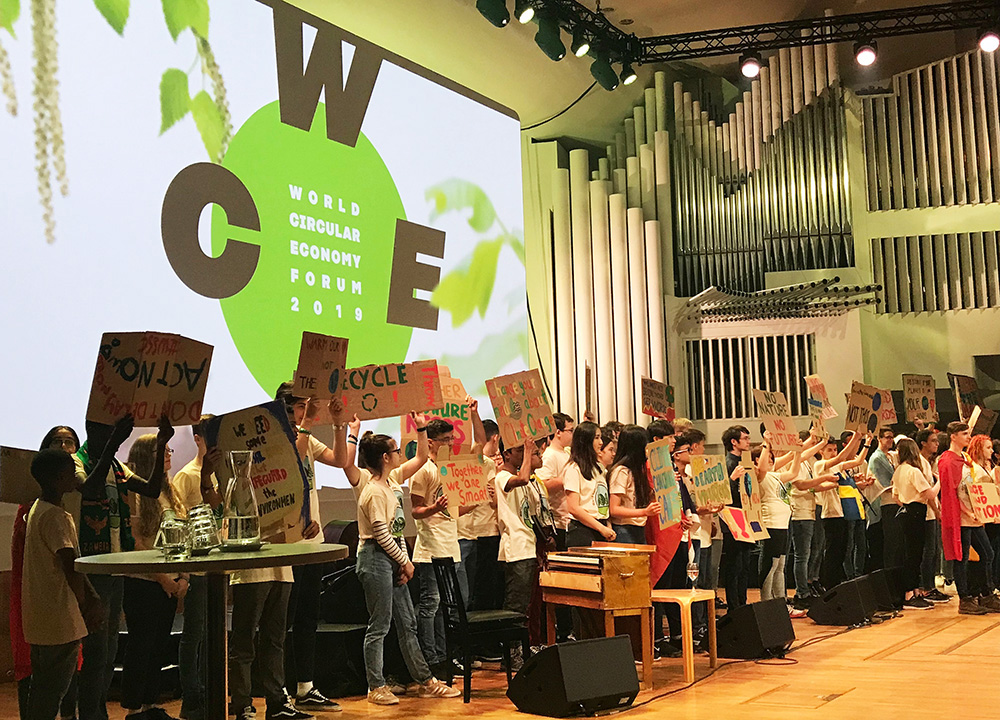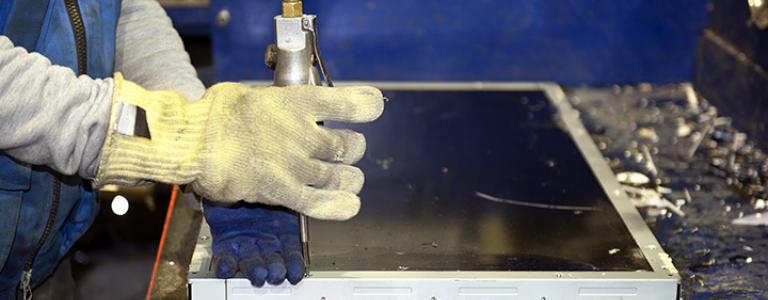How Will the Circular Economy Impact Jobs?
New research digs into some of the possible job impacts if a country like Finland fully embraces a circular economy model.
The 2019 World Circular Economy Forum (WCEF) in Helsinki was like a breath of fresh air as summer begins.
Speakers shared possible forecasts on innovation, economic opportunities and social development, giving new dimensions to the environmental sustainability of this promising economic model.

The question of how you grow and protect jobs under a circular economy has received increased attention this year. It’s natural to expect changes in employment under a circular economy, but, to date, a lot of analysis has been relatively high-level, based on economy-wide estimates. There remain several unknowns. Which sectors are best suited to growth under a circular economy? Where might new jobs be found? Where will governments have to assist workers to transition to new jobs?
In new research conducted in partnership with the Finnish Innovation Fund, Sitra, IISD dug into some of these unknowns to better understand how jobs may be created or impacted in Finland, though the findings have international implications. IISD also sought to provide insights on which sectors may need supportive policies to ensure that a transition to a circular economy is consistent with just transition principles.
We looked at six sectors: buildings, textiles, food production, mining, forestry and electronics. The good news across the board is that these sectors are well suited for a shift to a circular economy in Finland. Some, such as the building and electronics sectors, are naturally conducive to job growth under a circular model, since circularity implies an increase in labour-intensive activities associated with reuse, recovery and recycling (e.g., electronics recycling or building retrofits to meet efficiency targets).
Other sectors, such as mining or forestry, see job growth but at a smaller level, as there is a net benefit when considering reduced demand for raw materials weighed against a sector well suited to circularity (e.g., sustainable forest products, cobalt for electric vehicles) and the potential for industry to seek to increase exports to offset reduced domestic demand. This means that there isn’t a threat of job loss, despite shifts away from consumption and production of raw materials in Finland and a higher focus on efficiency and extended product life span.

Some sectors will require additional attention. For example, food production will be affected, as there will be slightly lower demand for products in a reduced-waste scenario. Measures can be adopted to offset impacts on domestic jobs, however, such as procurement and promotion of locally grown products.
At the forum, international thought leaders shared their feedback—one of the main benefits the WCEF delivers. Acting as host, Sitra representative Kari Herlevi highlighted the importance of inclusive employment in a circular economy. He spoke about the need to look beyond employment numbers to sustainable well-being and social impacts, emphasizing that the circular economy is not about competition between sectors but collaboration for a sustainable circular model.
Speaking for the Organisation for Economic Co-operation and Development (OECD), Shardul Agrawala highlighted often neglected areas of research. He pointed out that it’s not only about the number of new jobs, but also their quality, the new set of skills required, durability and wages. He also noted that, apart from the jobs that are created or ended, there are jobs that are restructured or redefined in a circular model.
Carlos Tapia, representing Tecnalia, spoke about his research at a European regional level. He examined the dynamics between material and technological providers, where the former is more rural and the latter more urban based. This necessitates not only considering what the economy is based on but also where those jobs are physically located. His work estimates that there are already 5.8 million workers in circular jobs in Europe today.
Representing the World Economic Forum, Antonia Gawel highlighted parallels with the fourth industrial revolution, noting the potential disruption for workers who are less resilient to technological change. She said that nearly three quarters of companies she has spoken with note that the most important component for the circular economy is the skills and talent required, much more so than the location of raw material inputs.
Peter Wooders, the Energy Program Director for IISD, closed the event by looking to the future. Having identified some jobs shifts within a circular economy model, the next challenge will be to develop implementation plans and policies that support workers in a just transition to a circular economy.
This event was a sneak peek. IISD and Sitra will share the entirety of their research in the fall, complete with job modelling in all six sectors and an analysis of how trade-related employment will be affected by a circular economy. The work will also include suggestions for how any government—not just Finland—can help workers find inclusive, circular employment.
You might also be interested in
South African Fossil Fuel Subsidies Hit Record Highs as Country's Energy Crisis Deepens
South Africa's fossil fuel subsidies tripled between 2018 and 2023, hitting USD 7.5 billion, up from USD 2.9 billion 5 years earlier, a new report by IISD reveals.
Blackouts and Backsliding: Energy subsidies in South Africa 2023
Blackouts and Backsliding presents the latest energy subsidy data for South Africa.
Financial Benefit-Sharing Issues for Critical Minerals: Challenges and opportunities for producing countries
Exploring nuances in the key features of critical minerals and the new challenges and opportunities they present to fiscal regulation.
A Sustainable Asset Valuation of a Net-Zero Transport Strategy in Indonesia
This report presents the economic valuation of net-zero transport strategies in Indonesia—their investment costs, added benefits, and avoided costs—encompassing interventions such as investments in public transport, private vehicle electrification, teleworking, and decarbonization of the electricity supply.
